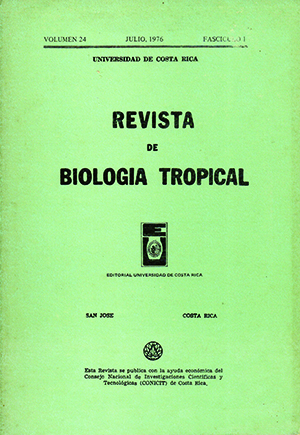Resumen
Los resultados de ubicación de dos abejas fósiles, usando métodos de taxonomía numérica, indican que ambas, Meliponorytes devictus y Electrapis proava, pertenecen a la tribu Meliponini (Apidae). Se confirmó a M. devictus como Tetragona devicta. Por su fuerte asociación con las trigonas superiores (Trigona, Scaptotrigona, Oxytrigona) y de acuerdo con las diferentes escuelas taxonómicas existentes, E. proava debería llamarse Trigona (Roussyana) proava, o simplemente Roussyana proava.
Citas
Kerr, W. E., & Vilma Maule 1964. Geographic distribution of stingless bees and iits implications. J. New York. Entomol. Soc., 72: 2-17.
Manning, F. 1960. A new fossil bee from Baltic amber. Verh. XI Kongr. Ent. Wien 1960, Vienna: 306-308 pl. 5.
Nelson, G. J. 1972. Phylogenetic relationship and classification. Syst. Zool., 21: 227-231.
Roussy, L. 1973. Contributions a l'étude de l'abeille tertiaire, de ses parasites et de ses enernis. Gaz. A picole, 38: 49-72.
Sneath, P. H. A., & R. R. Sokal 1973. Numerical taxonomy. W. H. Freeman, San Francisco.
Wille, A., & C. D. Michener 1973. The nest architecture of stingless bees with special reference to those of Costa Rica (Hymenoptera: Apidae). Rev. Biol. Trop., 21 (Supl. 1): 1-278.
##plugins.facebook.comentarios##

Esta obra está bajo una licencia internacional Creative Commons Atribución 4.0.
Derechos de autor 1976 Revista de Biología Tropical


